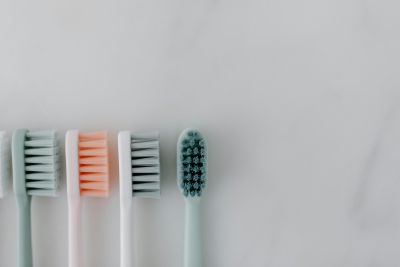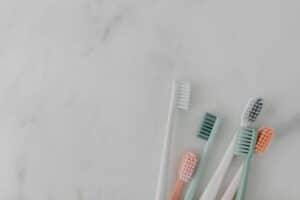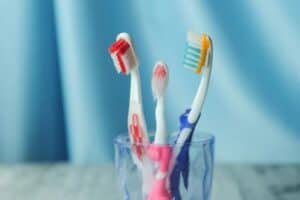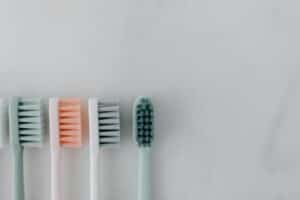
27 Apr The Pros and Cons of Electric vs. Manual Toothbrushes
The Pros and Cons of Electric vs. Manual Toothbrushes: The Ultimate Oral Care Showdown + Top 10 Insights
When it comes to keeping your pearly whites sparkling clean, the type of toothbrush you use makes a big difference. Should you go electric or stick with a classic manual? With all the advancements in oral care, many people are re-evaluating their options. In this guide, we’ll break down the pros and cons of electric vs. manual toothbrushes to help you make the best decision for your dental health.
What Is an Electric Toothbrush?
An electric toothbrush is a power-driven tool that uses either oscillating or sonic movements to clean your teeth more effectively than traditional methods. These brushes often come with advanced features like timers, pressure sensors, and multiple brushing modes.
Common Types of Electric Toothbrushes:
-
Oscillating-Rotating Brushes: Typically round heads that rotate in one direction and then the other.
-
Sonic Brushes: Vibrate at high speeds to create a cleaning action beyond the bristles.
-
Ultrasonic Brushes: Use ultrasonic waves to remove plaque and bacteria.
What Is a Manual Toothbrush?
A manual toothbrush is the standard, non-powered brush you’ve likely used for years. It relies entirely on your own brushing technique and motion. While simple, it can still be highly effective when used correctly.
Key Features:
-
Comes in soft, medium, or hard bristles
-
Various head sizes and shapes
-
Affordable and easy to find

Benefits of Electric Toothbrushes
Superior Plaque Removal
Studies, including those by the Cochrane Oral Health Group, show electric toothbrushes (especially oscillating models) reduce plaque and gingivitis more effectively than manual ones.
Built-In Timers and Sensors
Most electric brushes include 2-minute timers and pressure sensors, encouraging proper brushing habits and preventing damage from excessive pressure.
Great for People with Limited Mobility
Electric toothbrushes are especially helpful for individuals with arthritis or disabilities since they require less manual dexterity.
Drawbacks of Electric Toothbrushes
Cost and Maintenance
Electric toothbrushes are more expensive upfront and often require replacement heads that can add to long-term costs.
Charging and Battery Limitations
Some brushes need frequent recharging, and if you forget your charger during a trip, you may find yourself in a tight spot.
Over-Brushing Risk
With high-speed motions, users might apply too much pressure, potentially damaging enamel or gums despite built-in sensors.
Benefits of Manual Toothbrushes
Cost-Effective Option
Manual toothbrushes are incredibly affordable—some even come free from your dentist—and replacements are inexpensive.
Convenient and Portable
Lightweight, easy to pack, and never need charging—manual brushes are the go-to for travelers and minimalists.
Easy to Replace
Since they’re cheap and readily available, you can replace them every 3–4 months without a second thought.
Drawbacks of Manual Toothbrushes
Technique-Dependent
You’re responsible for the technique and timing. Without discipline, it’s easy to miss areas or apply too much pressure.
No Built-In Tech Support
Manual brushes don’t offer timers, pressure sensors, or smart feedback that could enhance your brushing routine.
Can Lead to Inconsistent Cleaning
Without consistent technique, you may not remove plaque as thoroughly, especially along the gum line or in hard-to-reach spots.

Electric vs. Manual Toothbrushes: A Quick Comparison
-
Plaque Removal:
Electric toothbrushes are generally more effective at removing plaque, especially models with oscillating or sonic technology. They do much of the work for you, which can lead to better results with less effort. -
Cost:
Manual toothbrushes are far more affordable upfront and don’t require additional purchases like charging bases or replacement heads. Electric brushes tend to be pricier both at the start and over time. -
Portability:
Manual toothbrushes win when it comes to portability. They’re lightweight, compact, and don’t need batteries or chargers—ideal for travel or on-the-go brushing. -
Ease of Use:
Electric toothbrushes are easier for those with limited mobility, like seniors or people with arthritis. They require minimal movement and often have ergonomic grips. -
Technology Features:
Electric models offer timers, pressure sensors, multiple brushing modes, and even smartphone connectivity in some cases. Manual brushes don’t come with tech support but are straightforward and reliable.
Recommendations for Different Needs
Children and Teens
Electric toothbrushes with fun features (like apps or lights) can encourage kids to brush longer and better.
Seniors or People with Disabilities
An ergonomic electric toothbrush can simplify brushing for those with arthritis or limited hand strength.
Travelers and Budget-Conscious Users
Manual toothbrushes win for travel and affordability—just toss one in your bag and go.
Expert Opinions and Studies
According to the American Dental Association (ADA), both electric and manual toothbrushes can be effective when used correctly. However, a study published in the Journal of Clinical Dentistry showed that electric toothbrush users had significantly better long-term gum health and less plaque.
External link: ADA Guide to Toothbrushes
How to Choose the Right Toothbrush for You
Consider the following when choosing:
-
Your budget
-
Mobility needs
-
Brushing discipline
-
Tech preferences
-
Dental recommendations
Personal preference plays a role—but effectiveness depends on proper, consistent use.
Common Myths About Toothbrushing Debunked
-
“Hard bristles clean better.” Not true—soft bristles are gentler and just as effective.
-
“Electric toothbrushes are only for lazy people.” False—many users see improved results with less effort.
-
“Manual brushing is outdated.” Not at all! It’s still highly effective when done right.

Frequently Asked Questions (FAQs)
1. Is an electric toothbrush better for braces?
Yes. Electric brushes can clean around brackets more effectively, reducing plaque buildup.
The oscillating and sonic movements help dislodge food particles stuck in hard-to-reach areas.
Many orthodontists recommend electric brushes to maintain oral hygiene throughout orthodontic treatment.
2. How often should I replace my toothbrush or brush head?
Every 3–4 months, or sooner if bristles are frayed.
Worn bristles are less effective at cleaning and can even damage your gums.
Regular replacement also prevents bacteria buildup on the brush head.
3. Can kids use electric toothbrushes?
Absolutely. Many brands make child-friendly models with soft bristles and smaller heads.
These often include fun designs, music, or apps to make brushing more enjoyable.
They’re especially helpful for teaching proper brushing habits early on.
4. Are electric toothbrushes waterproof?
Most are water-resistant, and many can be used in the shower, but always check the manufacturer’s instructions.
Submerging them fully in water or using while charging is not recommended.
Proper care will extend the life of your toothbrush and keep it functioning safely.
5. Does using a manual toothbrush increase your risk of gum disease?
Not necessarily—it depends on your brushing technique and consistency.
Manual brushes can be just as effective when used with proper form and duration.
However, users must be more conscious of brushing thoroughly and evenly.
6. What type of toothbrush do dentists recommend?
Dentists often recommend soft-bristled brushes—electric or manual—approved by the ADA.
Soft bristles are gentle on gums and effective at removing plaque without causing damage.
Electric brushes with pressure sensors are also praised for preventing over-brushing.
7. Can electric toothbrushes damage your gums or enamel?
Not if used correctly. Most electric toothbrushes come with pressure sensors to prevent aggressive brushing.
Using a soft-bristled head and following proper technique will protect your enamel and gums while maximizing cleaning power.
8. Is it okay to share an electric toothbrush handle?
Yes, as long as each person uses their own brush head.
Sharing the handle is safe if it’s cleaned regularly, but never share brush heads due to hygiene risks and potential germ transfer.
In Conclusion
Choosing between an electric and manual toothbrush isn’t a one-size-fits-all decision. While electric toothbrushes offer convenience, advanced features, and superior cleaning power, manual brushes are cost-effective, portable, and perfectly adequate with the right technique. Ultimately, the best toothbrush is the one you’ll use twice a day with good brushing habits. No matter which side you lean toward, your oral health will thank you for the effort.


Sorry, the comment form is closed at this time.